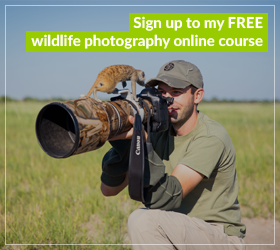I recently joined an expedition to Niassa Reserve in Northern Mozambique. I was part of a small team of conservationists and media producers. We were tasked with shooting material for “Niassa Wilderness”, a newly formed not-for-profit trust working to protect this remote wild place.
As our small plane approached the dirt airstrip, I caught my first glimpses of Niassa and the scenery left me speechless. This felt like a prehistoric place – a land untouched by man.
Unfortunately my first impressions did not entirely reflect reality. The area was indeed incredibly remote, the habitat and landscape very much intact, and the wildlife plentiful. However, the insidious influence of man was ever-present, lurking just below the surface…
Niassa Reserve holds the largest population of elephants in Mozambique, but it is at the front line of Africa’s current elephant-poaching crisis. In 2012, the reserve was home to 12,000 elephants. In 2016, only 3,500 remained. That’s a fall of 70% in four years. The statistics are heart breaking.
During my time in Niassa, I did see elephants but they were unsurprisingly skittish and there were few older, mature animals. We also saw carcasses.
Niassa Wilderness is a privately-managed concession that makes up just over 10% of the wider Niassa National Reserve. The concession contains 20% of Niassa’s elephants.
The challenge of protecting the elephants is daunting. The concession is 4,450km² and Niassa Wilderness currently employs around 40 anti-poaching rangers – that’s just one ranger for every 11,250 hectares. To start turning the tide of poaching, around twice this number will be needed.
The small team at Niassa Wilderness need new funding to ramp up their efforts. Every anti-poaching ranger they employ from the local community brings a double benefit; they can patrol more ground but they also bring a new source of income to their community which helps offset the influence of the poachers.
As part of the drive to raise funds, fresh imagery showcasing Niassa was required; people are much more likely to want to contribute to causes where they can see and connect with the people, places and animals that are at stake. Very little professional photography or video footage exists from Niassa and that is why our expedition was necessary. My role was to try and capture the spirit of Niassa through still photographs.
To illustrate the splendour of Niassa, I wanted to photograph the incredible landscape from the air. I therefore went up several times in a small open-sided “Bat Hawk” aircraft that is usually used for anti-poaching patrols. Soaring over the primeval landscape, as our lightweight plane was buffeted by wind, was an exhilarating experience, if somewhat challenging from a photographic perspective!
From the air I could get a true sense of the landscape; it was flat with the Lugenda River winding lazily through the centre of the reserve. Here and there, gigantic rocky outcrops reared out of the Earth. These outcrops, known as inselbergs, could be several hundred metres high from their base. It was a real privilege to photograph this unique landscape that so few have documented before.
Simon Espley, CEO of Africa Geographic, also joined the expedition and has written a fascinating article about the Niassa Wilderness initiative, which you can read here.
I would like to thank Greg, Derek, Nic and the entire team at Niassa Wilderness for the tireless and selfless work that they do to protect this special place.











This video is so beautifully shot; I cried in anger for the plight of the elephant(s) and man’so greed for ivory and photosays of their, “kills”.
How can we as humans believe in a God and at the same time, act like we have none?
Here in America, Donald Trump has lifted protection of whales and other protected creatures…and the environment.
The United States used to be the standard bearers for the safe keeping of our world…but this “new” greed driven slug of a man, Trump, is an abomination to the world in which we live.
Thank you, for sharing this video with those of us who still care about the future of ALL those who live on our planet EARTH.
Fantastic photos. Fortunate to have visited three times. First visit was before there was any formal management and we walked for a week with a local subsistence hunter. Humbling.
god choose someone among us to be his instrument of love and compassion…its a great work to protect this creature and mother nature.thanks